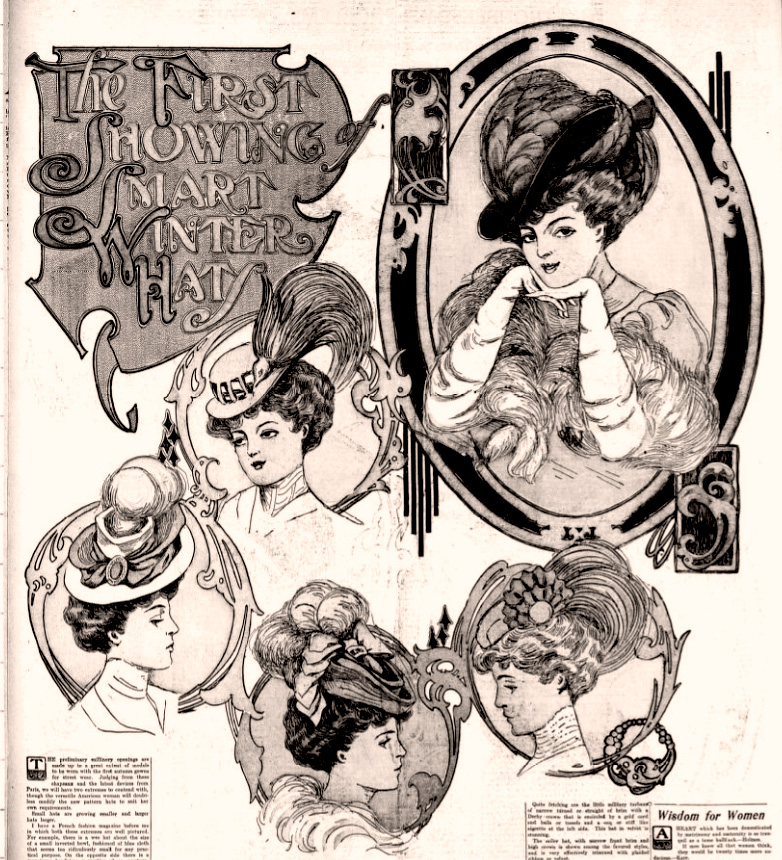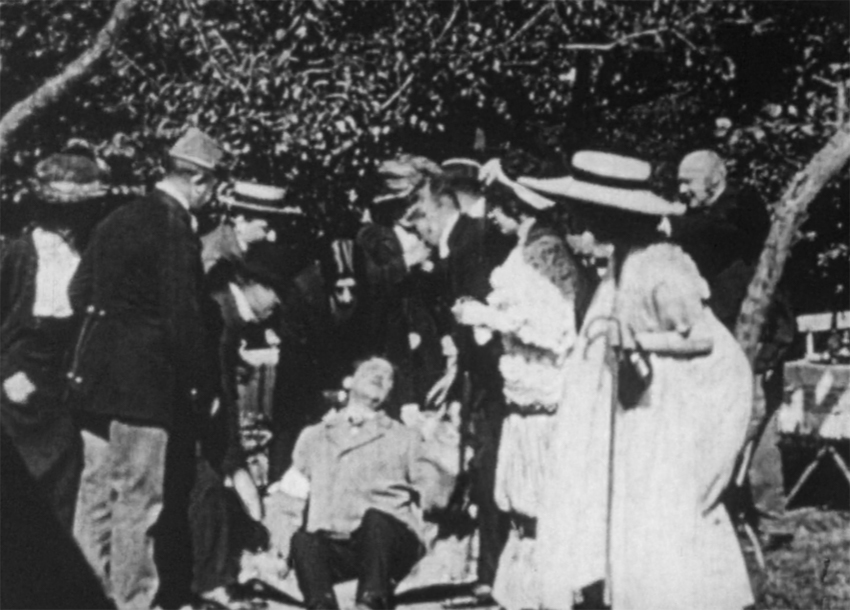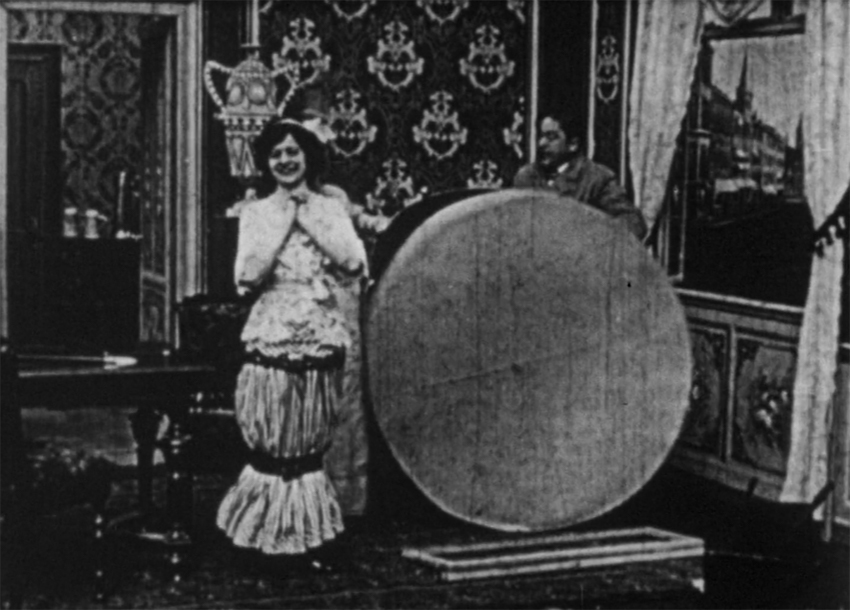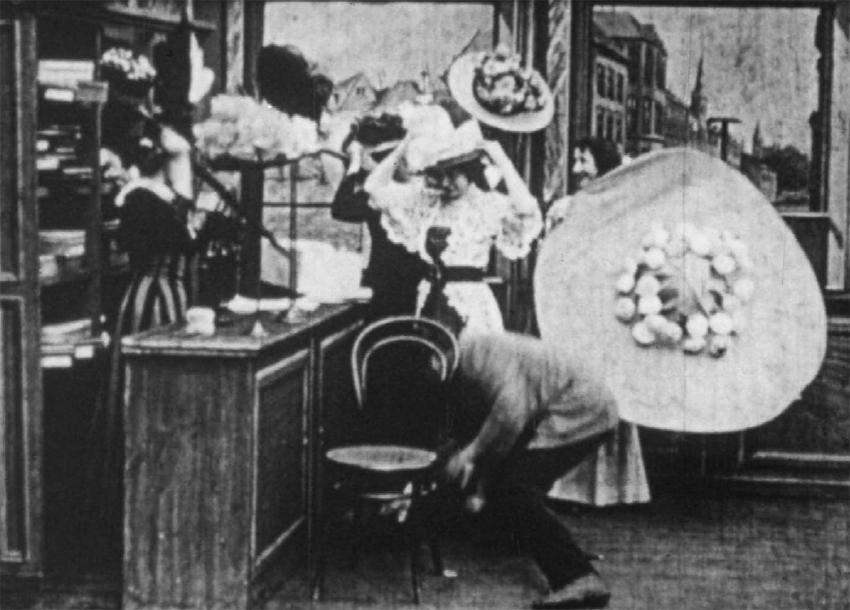A fashionable woman’s gigantic new hat terrorizes Gilded Age Denmark as her husband tries to cope with this dangerous fashion. A social satire from comedy pioneer Viggo Larsen, this sendup of vanity has held up beautifully.
Home Media Availability: Stream from Stumfilm
Death by Chapeau
I was sick and depressed about it and wanted to be entertained for the low, low price of no money at all, so I spent the first months of this year enjoying the rich content that international film archives have made available for streaming. Denmark was a capital of early cinema and it is a pioneer again with its ambitious goal to make its entire silent film history available online for free. Denmark’s lofty aims and my desire for something new led me to discover Viggo Larsen, one of the great pioneers of film comedy.
When we talk about the roots of comedy, we frequently start with Sennett, Chaplin, Keaton… maybe the nerds will discuss Max Linder (as well they should!) but even before these famous names, silent era audiences were laughing their heads off at the antics of talented comedians.
Larsen was not solely a comedy director. He worked in every genre, from throbbing melodrama to silent operetta adaptations, but his funny business is what has charmed me the most and A New Hat for the Madam is my favorite of his available films.
The film opens with Madam choosing her new hat. At the turn of the century, gigantic hats covered in all manner of flowers, feathers and veils were the rage and Madam means to outdo everyone with one at least four feet in diameter. Her husband (let’s call him “Herr”) supports his wife’s fashionable endeavors and even takes part the window so they can winch up the wagon wheel-sized hatbox. So what if her hat knocks down a vase or two in the living room?
The couple set out for a formal tea but between Madam’s hat and her equally fashionable hobble skirt—essentially a fabric belt around her knees—they can’t get very far. She can’t walk and she can’t get in a taxi, so Herr purchases a toy wagon and wheels his wife along. (What’s a few faceplants between a married couple?)
Upon arrival at the tea, Madam’s hat strikes a military man, the military man strikes the hat, Herr won’t stand for his wife’s headgear to be insulted and so a duel with sabers it is! With the military man victorious and the husband wounded, he is carried off the field of battle with his wife’s hat serving as a stretcher. The film ends somewhat abruptly with the couple embracing and what appears to be Herr begging Madam to give up her hat.
Now, the most obvious comparison is going to be Those Awful Hats, D.W. Griffith’s 1909 film mocking the big-hatted fashions and ending with some remarkably janky special effects portraying the inconsiderate women having their chapeaus dragged out by crane and one woman being carried away entirely by it.
I’m not exactly sure why it’s as popular as it is these days. The effects were primitive in 1909—R.W. Paul was doing more sophisticated film-in-film in 1901 and Ladislas Starevich did better work just three years later, in 1912, while simultaneously stop-motion animating dead insects. Further, the denouement of Those Awful Hats is mean-spirited—especially when you realize that the men are allowed to leave their top hats on unmolested! There’s no real humor in the picture, just stale “women are crazy, amiright?”
Larsen, on the other hand, portrays both men and women as prisoners of social expectations, be they fashion or matters of honor. All the characters, from the delivery boy to the hapless husband to the military duelist, are forced to go along with the ridiculousness, no matter how much they balk. Anyone could have put a stop to the madness at any time simply by refusing to go along with it. In fact, it could be argued that two grown men attacking one another with swords over a large hat is more ridiculous than the hat itself.
In addition to the equal opportunity foolishness, A New Hat for the Madam keeps things light and affectionate between the main couple. Despite the inconvenience they both endure, they do not bicker and the husband’s reaction to his wife after the duel is not to scold her but to kiss her and then beg her to get rid of the hat. He spends the picture trying to adapt to his circumstances but he is not cross with her.
The near-miss tragedy is a comedy staple and the way all the characters careen toward their eventual injury gives the picture something of a tragic structure. It’s all absolutely ridiculous but only the husband’s near-death experience convinces him that something should be done beyond timid mitigation strategies.
Oh, and we all know about the big hats but what about those hobble skirts? Well, as of this writing, Wikipedia (in its infinite wisdom) gives first placement to a ridiculous tale of a woman tying her skirt with a belt when she inaugurated women flying in 1908. But last I checked, 1908 is later than 1906, when A New Hat for the Madam was made, and hobble skirts were already clearly ubiquitous fashion back then. (Why do trivia books and Wikipedia always go in for these lazy “Eureka!” discoveries? I guess it’s easier than discussing the actual evolution of fashion.
In any case, I have found references to hobble skirts coming into fashion as far back as 1905, so airplanes clearly had nothing to do with anything. Cute story, though. And make sure to have your tiny wagons ready for transport!
A New Hat for the Madam is fascinating fashion history and one of the finest satires of the 1900s. Viggo Larsen’s good-natured ribbing of the modern world is sharp and witty, never mean but frequently pointed. It also has a surprisingly sweet center, which makes the whole thing quite slick and pleasant to watch. It’s one of my favorite new-to-me discoveries this year and I recommend it highly.
Where can I see it?
Stream for free on Stumfilm. The comedy does not have a score but some light classical should work if you prefer your silents with music, as I do. Strauss polkas, such as Tritsch-Tratsch-Polka and Annen-Polka suited it very well and were my choice as I viewed it but I can also see Mozart, Chopin or Saint-Saens all matching the mood. (If you know of a Danish composer who would suit, let me know. I am only familiar with darker, slower or heavier Danish classical and Carl Nielsen’s Aladdin just didn’t go.)
☙❦❧
Like what you’re reading? Please consider sponsoring me on Patreon. All patrons will get early previews of upcoming features, exclusive polls and other goodies.
Disclosure: Some links included in this post may be affiliate links to products sold by Amazon and as an Amazon Associate I earn from qualifying purchases.








Excellent! I may find myself obliged to visit Stumfilm! 🙂
What a wonderful, funny, warm-hearted little film! Even having read your ‘spoilers’ I still laughed out loud when the toy wagons turned up. Thanks for bringing attention to these gems….which reminds me………now to find ‘The Cameraman’s Revenge’!
Wasn’t it adorable?